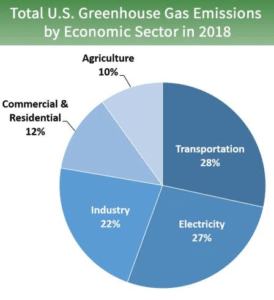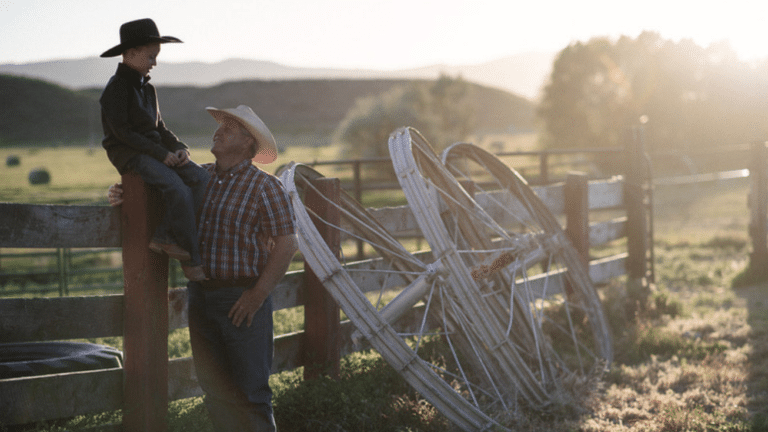American Cattle Ranching and Climate Change
Clearing up the misconceptions surrounding the ecological footprint of beef cattle ranching in the United States.
Sustainable agriculture is a prevalent topic among both agricultural and environmental communities across the globe. The vast majority of those involved in agriculture understand the importance of balancing food security and environmental conservation. The fight against climate change and world hunger are two monumental goals that require an open and honest discussion in order to move forward together in the right direction.
To do this, facts must be separated from fiction and—most importantly—collaboration must take place. With a quick glance at meat production statistics, one will realize that the meat industry isn’t going anywhere:
- The average American eats an estimated four ounces of meat per day.
- Meat production in 2019 reached record highs at 103.3 billion pounds.
- The U.S. ranks fourth in the world in terms of global beef consumption per capita.
- The U.S. ranks first in total beef production, followed by Brazil and the E.U.
The American beef industry is here to stay, yet a topic of concern is the impact U.S. cattle ranching has on the environment. While these concerns are valid to an extent, many potential causes are misconstrued within the complexity of the issue.
Some media campaigns and false advertisements have perpetuated misconceptions and instigated scrutiny rather than support for American cattle ranchers—who have actively decreased their carbon footprint for the last 30 years while meeting the growing demand of consumers.
When diving deeper into the topic, one will find that American cattle ranchers are on the frontlines of climate change advocacy and have the best understanding of how to combat this challenge while continuing to supply the world with nutrient-rich meat. Thanks to their continued dedication and effort, the U.S. is the leading nation in production efficiency and environmentally sustainable practices within the cattle industry.
Is Livestock Production a Leading Factor in Greenhouse Gas Emissions?
According to the Environmental Protection Agency, U.S. agriculture as a whole contributes to less than 10 percent of greenhouse gas emissions in the nation—with less than 3 percent linked to beef cattle production. This percentage is expected to shrink even further through ongoing agricultural research and enhanced management practices
Before agriculture, top contributors of GHG emissions in the U.S. include transportation, electricity, commercial and residential real estate, and the raw materials industry. While this has not stopped farmers and ranchers from implementing sustainable practices, their impact can only go so far if improvements in other sectors are not made as well.
Nevertheless, U.S. cattle ranchers have taken more steps in reducing agriculture’s carbon footprint than any other economic sector. Since 1990, American ranchers have found ways to reduce GhG emissions while simultaneously increasing production in order to meet growing consumer demand.
- From 1990 to 2016, total methane emissions per unit of beef production declined by 10 percent.
- From 1990 to 2016, total methane emissions per unit of milk production declined by 25 percent.
For cattle ranching, methane emission is the contributing factor most heavily scrutinized. Cattle ruminants produce methane through their digestive processes. This process—known as enteric fermentation— is the main contributor to livestock’s role in greenhouse gas emissions from agriculture.
How Cattle Ranchers are Reducing Their Carbon Footprint
To further reduce livestock’s greenhouse gas emissions while continuing to provide meat for a growing world population, beef cattle ranchers are proactively implementing methane-reducing methods to manage manure, improve soil health, and enhance herd efficiency.
Manure Management Strategies
Methane emissions are a natural part of a cow’s life cycle that existed before agricultural use. However, an increasing global population coupled with the introduction of fossil fuels has led to a “thicker blanket” of methane covering the earth’s atmosphere. Effective strategies to minimize manure methane emissions include:
- Aeration and composting manure stockpiles;
- The use of anaerobic digesters to convert manure to renewable energy;
- Urease inhibitors to reduce ammonia emissions; and
- Supplemental oils and additives in livestock diet.
Some of these strategies were found to reduce methane emissions by as much as 80 percent. Anaerobic digestion produces biogas which can fuel mechanical power for heat and electricity. Although a steep initial investment, anaerobic digesters not only decrease the environmental impacts of organic waste but create a longer-lasting fertilizer for operational use. Proper nutrient management of manure—from methods like composting and anaerobic digestion—reduces methane emissions and is a useful source of fertilizer that shrinks ruminant volume, kills weed seeds, and improves soil health.
Soil Health and Land Management Strategies
American cattle ranchers often grow their own grains for their livestock and use nutrient-rich compost to fertilize crops. One-tenth of all carbon emissions caused by humans comes from the soil, meaning that minimizing the ecological footprint of agriculture starts with good stewardship of the land on which our food is harvested.
“When cattle graze on grass pastures, they are actually improving the grass and what they’re grazing on. We are doing everything we can to improve our environmental footprint. I think we can make more impactful changes in our lives through recycling, or walking to work, or using public transportation.”
Brandi Buzzard, Kansas Cattle Rancher.
Cattle ranchers in the U.S. have found that livestock can be part of the climate change solution rather than the problem through carbon restoration and conservation grazing. Controlled grazing management of plant-covered land recycles nutrients that are beneficial to soil health and boosts cover crop foliage. Correct soil health management strategies are fundamental in sustaining the American grassland ecosystem by:
- Preventing soil depletion;
- Stimulating vegetative growth;
- Germinating seeds;
- Protecting against landscape erosion; and
- Reducing water usage.
Livestock Management Strategies
Healthy pastures lead to healthier cows which, in turn, increases the productivity of each animal. Maintaining a healthy herd is better for the environment, the quality of meat we consume, and the rancher’s bottom line. Areas of focus to boost the efficiency and health of livestock include:
- Diet;
- Optimized breeding practices; and
- The integration of pasture and range-based systems.
Through livestock health research, American ranchers gain insights on new strategies to maximize the use of each head of cattle and minimize the environmental impact. Contrary to what has been previously reported, 86 percent of livestock feed is not suitable for human consumption which further minimizes the industry’s environmental burden.

The Role of Livestock Ranchers in the Sustainable Development of Agriculture
The ecological footprint of U.S. cattle ranching is minuscule compared to other sectors, but the impact of climate change is of paramount importance to American ranchers. In 2011, exposure to high temperatures cost the livestock sector more than $1 billion in heat-related losses. Heat stress can also increase an animal’s vulnerability to disease and endanger our nation’s meat supply. Because of this, American cattle ranchers prioritize sustainable agriculture practices and are motivated to prevent the repercussions of climate change on a personal level.
“The technological, genetic, and management changes that have taken place in U.S. agriculture over the past 70 years have made livestock production more efficient and less greenhouse gas-intensive. According to the FAO’s statistical database, total direct greenhouse gas emissions from U.S. livestock have declined 11.3% since 1961, while production of livestock meat has more than doubled.”
Frank Mitloehner, Professor and Air Quality Specialist
To continue working towards a sustainable future for American agriculture, collaboration rather than division is needed. Each year, new resources are designed to support our nation’s hard-working cattle ranchers in the fight against climate change and world hunger. Resources available to assist in land conservation and the environmental sustainability of cattle ranching include:
Organizations
- The National Sustainable Agriculture Coalition: An advocacy organization for federal policy reform to advance sustainability in the food systems and natural resources.
- The Land Conservation Assistance Network: A free resource that provides information for landowners regarding rural land conservation.
- National Sustainable Agriculture Information Service (ATTRA): A cooperative initiative with the USDA that provides information and technical assistance to implement sustainable agriculture practices.
Grants
- Conservation Stewardship Program (CSP): A conservation program designed to help participants enhance weather resilience of crops while improving wildlife habitat of their land.
- Environmental Quality Incentives Program (EQIP): Financial and technical assistance to agricultural farmers and ranchers to address natural resource concerns.
- Sustainable Agriculture Research and Education (SARE) Program: Farmer-driven, grassroots grants that are available for sustainable agricultural practices.
Supporting the Essential Role of American Cattle Ranchers as They Tackle Climate Change
Although American cattle ranching is not a major contributor to global climate change, the industry strives to be a major part of the solution. U.S. ranchers have taken on the challenge of continuing to provide nutritional food for the world in the most environmentally efficient way possible. It is no small task, that requires creative thinking and an ability to adapt. This article has merely scratched the surface of the complexity of the issue at hand, but one thing is clear—American cattle ranchers understand the importance of land stewardship and have already begun taking concrete steps towards building a sustainable future.
As an advocate for the sustainable future of American agriculture, AgAmerica creates innovative solutions to provide the capital needed for farm and ranch upgrades. To learn more about our custom loan and line of credit packages to finance your operational goals, contact one of our Relationship Managers today.







